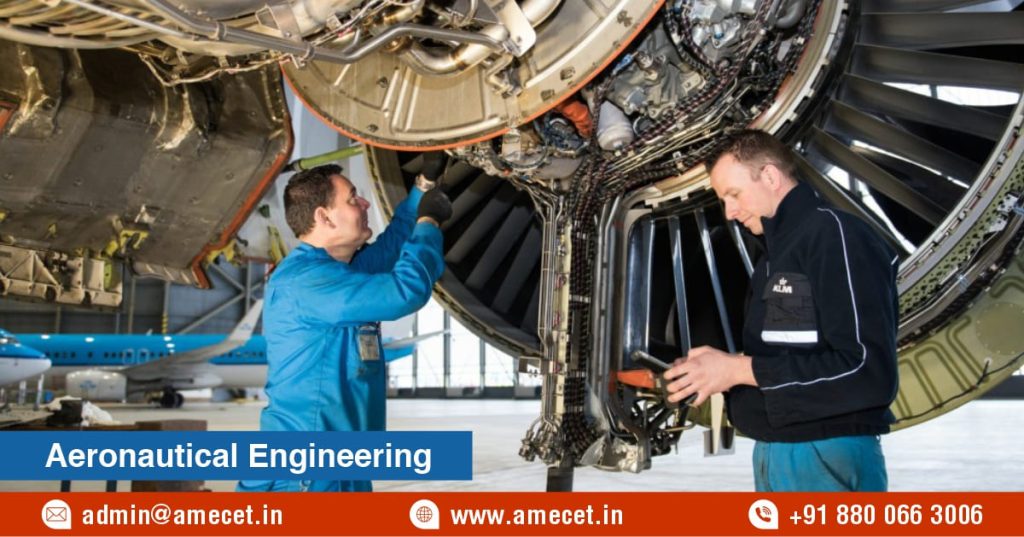How Do You Become an Aeronautical Engineer?
Posted on : 13 August, 2024 5:53 pm
To become an aeronautical engineer, you typically need a bachelor’s degree in aeronautical or aerospace engineering. The process begins with completing relevant coursework in subjects such as fluid dynamics, propulsion, and structural analysis. Gaining practical experience through internships or cooperative education programs is crucial. After obtaining your degree, pursuing professional certification or licensure may be necessary, depending on your location. Building a strong foundation through hands-on projects and staying updated with industry advancements will enhance your career prospects in this dynamic field.
Page Contents
ToggleEducational Requirements
Becoming an aeronautical engineer typically requires a bachelor’s degree in aeronautical or aerospace engineering. This education provides a strong foundation in essential areas such as fluid dynamics, propulsion systems, and aircraft structures. Advanced degrees may be pursued for specialized roles or career advancement. Key coursework, hands-on lab experience, and project work are crucial for gaining the necessary skills and knowledge for this field.
Points:
- Bachelor’s Degree: Required in aeronautical or aerospace engineering.
- Core Subjects: Includes fluid dynamics, propulsion, and structures.
- Mathematics and Physics: Fundamental courses for understanding engineering principles.
- Laboratory Experience: Hands-on learning through practical lab work.
- Design and Analysis: Courses in aircraft design and performance analysis.
- Software Skills: Training in engineering software and simulation tools.
- Advanced Degrees: Optional for specialization or higher-level positions.
- Accreditation: Ensure the program is accredited by relevant engineering bodies.
Choosing the Right Degree Program
Selecting the right degree program in aeronautical engineering involves evaluating several factors. Look for programs with strong industry connections, accredited by recognized bodies, and offering comprehensive coursework and hands-on experience. Consider faculty expertise, research opportunities, and facilities available for practical training. Additionally, review program rankings, alumni success, and internship placements to ensure you receive a quality education that aligns with your career goals.
Points:
- Accreditation: Ensure the program is accredited by a recognized engineering body.
- Industry Connections: Look for programs with strong ties to the aerospace industry.
- Faculty Expertise: Check the qualifications and research background of the faculty.
- Coursework: Review the curriculum to ensure it covers essential topics.
- Facilities: Assess the availability of labs and engineering tools.
- Internship Opportunities: Evaluate the program’s internship placement support.
- Research Opportunities: Look for programs offering research projects and labs.
- Program Rankings: Consider the program’s reputation and ranking in the field.
Certifications and Licensure
To enhance career prospects, aeronautical engineers may pursue additional certifications and licensure. While a degree is essential, certifications like the Professional Engineer (PE) license can further validate expertise. Licensure requirements vary by region, but typically involve passing exams and demonstrating professional experience. Certifications in specialized areas, such as avionics or aerospace systems, can also improve job opportunities and professional development.
Points:
- Professional Engineer (PE) License: Validates engineering expertise and credentials.
- Certification Exams: Typically required for licensure or specialized certifications.
- Regional Requirements: Vary based on location and governing bodies.
- Work Experience: Demonstrated through practical experience and projects.
- Specialized Certifications: Available in areas like avionics or aerospace systems.
- Continuing Education: Often required to maintain certifications.
- Professional Organizations: Membership can provide additional certification options.
- Licensure Renewal: Includes periodic re-certification or continuing education requirements.
Navigating Job Opportunities
Navigating job opportunities as an aeronautical engineer involves exploring various sectors such as commercial aviation, defense, and aerospace manufacturing. Networking with industry professionals and leveraging job boards can uncover openings. Tailoring your resume to highlight relevant skills and experiences is crucial. Internships, co-op programs, and industry certifications can enhance employability. Staying updated on industry trends and pursuing advanced education can also open doors to specialized roles and career advancement.
Points:
- Industry Sectors: Explore commercial aviation, defense, and aerospace manufacturing.
- Networking: Connect with industry professionals through events and online platforms.
- Job Boards: Use specialized job boards and company websites.
- Tailored Resume: Customize your resume to highlight relevant skills and experiences.
- Internships and Co-ops: Gain experience and build connections.
- Certifications: Pursue relevant certifications to enhance qualifications.
- Industry Trends: Stay informed about technological advancements and market needs.
- Advanced Education: Consider further degrees or specializations for career growth.
Continuing Education and Professional Development
Ongoing education and professional development are vital for career growth in aeronautical engineering. Advanced degrees, such as a master’s or Ph.D., can open doors to specialized roles or academic positions. Professional certifications and training in emerging technologies keep skills current. Attending industry conferences, workshops, and seminars fosters continuous learning and networking. Staying engaged with professional organizations also supports career advancement and knowledge enhancement.
Points:
- Advanced Degrees: Pursue a master’s or Ph.D. for specialized roles.
- Certifications: Obtain certifications in new technologies and methods.
- Workshops and Seminars: Attend industry-related events for updates and networking.
- Professional Organizations: Join associations for resources and opportunities.
- Conferences: Participate in industry conferences to learn about trends.
- Online Courses: Utilize online platforms for flexible learning.
- Research and Publications: Engage in research and contribute to industry journals.
- Networking: Build connections through professional groups and events.
In conclusion, becoming an aeronautical engineer involves a comprehensive journey of education, practical experience, and continuous professional development. Starting with a relevant degree, candidates must gain hands-on experience and may pursue additional certifications or licensure. Navigating job opportunities requires networking and staying informed about industry trends. Ongoing education, through advanced degrees and professional development, is crucial for career advancement and specialization. Embracing these steps ensures that aeronautical engineers are well-prepared to contribute to the dynamic field of aviation and aerospace, driving innovation and maintaining high standards of safety and efficiency.

